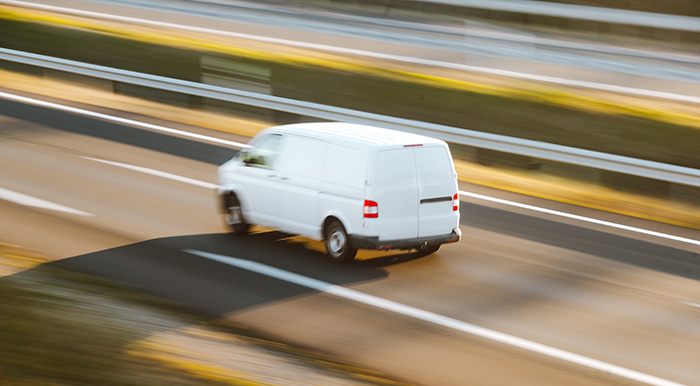Get our independent lab tests, expert reviews and honest advice.
What’s it really like to be an Amazon delivery driver?

Need to know
- Around eight million Australians shop on Amazon, which means goods bought on the site are being transported hurriedly along our streets more or less constantly
- Many of the gig workers delivering these items face considerable stress, and many hold multiple freelance delivery jobs to make ends meet
- The Fair Work Commission now has some power over the gig economy sector, but the Transport Workers Union reports that Amazon Flex and other casual drivers continue to lack basic employee rights
When Amazon arrived in Australia in December 2017, the online retail giant struggled to gain a foothold. But its strategy of undercutting all competition on price and quickly delivering the goods eventually paid off.
These days around eight million Australians shop on Amazon, which means goods bought on the site are being transported hurriedly along our streets more or less constantly during working hours, and often well beyond them.
Over half the Amazon Flex drivers surveyed said they were under pressure to rush on deliveries
Many of the casual workers delivering these items face considerable stress, and many hold multiple freelance delivery jobs to make ends meet and to hedge the ever-present threat of deactivation from the employer apps they rely on to book gigs and manage their employment.
In 2021 the Transport Workers Union (TWU) surveyed around 250 Amazon Flex drivers and uncovered a range of issues. Over half said they were under pressure to rush on deliveries, and nearly three-quarters said they were worried about their vehicles being overloaded.
How Amazon Flex works
Under the Amazon Flex model, the company turns just about anyone with a vehicle into part of its delivery fleet.
Owners of smaller cars, or ‘sedans’ can choose up to a four-hour delivery block, while vehicles that can hold five passengers can make deliveries for six and a half hours and vans for eight hours. In the latter two cases, a half-hour unpaid break is included.
Under the Amazon Flex model, the company turns just about anyone with a vehicle into part of its delivery fleet
Drivers commit to working for a number of hours on a given day without knowing how many parcels they’re expected to deliver during those hours. They only find out when they pull into an Amazon depot to pick them up. Amazon uses an algorithm that supposedly determines how long it should take the driver to deliver a certain number of parcels based on the delivery locations, but it doesn’t reliably factor in variables such as traffic, hard to access locations, and parking difficulties. These variables mean drivers are often frantically racing against the clock.
The owner-drivers have to pay all the overheads – fuel, vehicle maintenance, the costs of their digital devices and connections, and any other equipment that may be necessary. They get none of the benefits due to normal employees, such as superannuation and paid leave.
For some, it’s just a bit of extra money that comes in handy. But others depend on these low wage gigs for economic survival.
Unfair termination a constant threat
A 2023 report by The McKell Institute – a Queensland-based not-for-profit research organisation – found that gig economy drivers in general remain underpaid and overworked, and their casual employment can be terminated through no fault of their own. Amazon and other employers simply deactivate the apps which are the workers’ primary interface with the business.
There’s a sense of desperation among these drivers, whether it’s parcel or food delivery or rideshare. In the McKell report, 79% of the 1036 drivers surveyed said they depend on the income to make ends meet, and around a quarter reported having their work apps deactivated or suspended. For many drivers, this is a constant worry.
The TWU is currently pursuing a case with the Fair Work Commission on behalf of an Amazon Flex driver who was deactivated this year for not being able to deliver parcels, even though he carefully explained why it wasn’t possible in each case. He had been a driver since 2020.
Regulations can’t keep up, leaving workers unprotected
The gig economy basically went crazy when it first took root in Australia. According to a 2020 study by the Actuaries Institute of Australia, it grew ninefold between 2015 and 2019 on its way to reaching the mark of $6.3 billion in revenue, with a surge of 32% in 2019. Regulations were slow to catch up.
In 2022, a NSW government committee tabled the first of two reports on the gig economy, which made the case that the legal framework under which gig workers such as Amazon drivers operated perpetuated “the overwhelming power imbalance” between workers and multinational corporations.
79% of the 1036 drivers surveyed said they depend on the income to make ends meet, and around a quarter reported having their work apps deactivated or suspended
At the time, gig workers were not even guaranteed minimum wage, let alone paid leave. The committee recommended that they receive such entitlements as well as the power to bargain collectively with employers and join unions, which had long been denied.
That same year, the TWU scored a major win when the NSW Industrial Relations Commission ruled that delivery drivers in the state who owned vans that could carry between 1.5 and 3 tonnes were entitled to $43.74 an hour. For Amazon Flex drivers, the rate was set at $37.80 an hour in NSW for all delivery vehicles.
The approximately 45% pay increase to $43.74 for non-Amazon drivers was phased in between February 2022 and July 2025.

Enter the Fair Work Commission
Then, in August 2024, action was taken on a national scale. The federal government updated fair work legislation, allowing the Fair Work Commission (FWC) to set minimum standards for gig workers – technically known as ’employee-like’ workers – including payment.
It also protects these workers from being arbitrarily kicked off the apps they depend on for their employment.
In August, the TWU made an application to the FWC on behalf of Amazon Flex and other delivery drivers calling for company-funded superannuation, safety training, paid rest breaks, worker representation, and dispute resolution and consultation rights. The case is still pending.
In the TWU’s view, these minimum standards would set a benchmark, and it wants to see Amazon get on board.
Amazon is dangerously undercutting rates and standards in Australia and without curbing this Amazon effect it will drag down the entire transport industry
TWU national secretary Michael Kaine
Meanwhile, nobody’s getting rich in the gig economy package delivery game. Amazon Flex drivers outside of NSW can expect to make around $118 for a four-hour block of delivery time, just slightly above the national minimum wage of $24.95 per hour.
TWU national secretary Michael Kaine tells CHOICE that the situation for drivers has not improved since the 2021 driver survey.
“Amazon is dangerously undercutting rates and standards in Australia and without curbing this Amazon effect it will drag down the entire transport industry,” Kaine says.
“For years these workers have struggled with impossible delivery timeframes, overloaded vehicles and union-busting tactics. This is a company that has a worldwide reputation for appalling treatment of workers. We urgently need to see decent pay and standards in the gig economy to return a fair playing field, and end the rampant exploitation of workers.”
Kaine calls the FWC’s oversight of Amazon drivers and other gig workers “a world first”, but how the new protections will play out remains to be seen.
Amazon says drivers are treated fairly
We asked Amazon Australia whether it was taking the criticisms of its Amazon Flex system into consideration and planning to improve conditions for drivers.
Rather than responding directly, Amazon directed us to a blog on its website that paints a positive picture of being an Amazon Flex driver. The blog says drivers are paid competitively, have flexible work hours, are given the right number of packages to safely and comfortably deliver, and are paid extra if they have to go over their allotted time block to complete deliveries.
Delivery algorithm ‘in the realm of fantasy’
Katie* has been an Amazon Flex driver for about three years and says that while she appreciates the opportunity to make money and the freedom of deciding when she wants to work, the terms of her employment are inherently unfair.
“It’s a subcontractor arrangement with Amazon, and as such, you don’t get the same benefits that you would get as an employee. So you’re not going to get sick leave or annual leave or superannuation or any of those things at all. Basically, if you don’t work, you don’t get paid.”
And while there’s a certain amount of freedom that comes with the gig, it comes to an end once you commit to a delivery block.
What we don’t have any control over is where we’re going to be delivering, what we’re going to be delivering, or how many packages we’re going to be delivering
Amazon Flex driver 'Katie'
“When we accept the block, we’ll see the depot that we’re going to, the time, and also the amount that we’re gonna be paid for that. What we don’t have any control over is where we’re going to be delivering, what we’re going to be delivering, or how many packages we’re going to be delivering,” Katie says.
That can have unexpected consequences. Katie says the accuracy of the Amazon delivery algorithm exists “in the realm of fantasy”.
“It’s supposed to factor in the distance that you drive, the amount of time that it would take you to get between one spot to the next spot, and the estimated time it takes you to actually do the delivery,” Katie says.
“That’s fine until you’re doing units, particularly lots of units that have an intercom, because the person that you’re delivering to is more than likely not gonna be there. So you can’t get access, which means that you have to start buzzing neighbors and that takes longer. You may not get parking either.”
It’s just one scenario where the algorithm fails to take reality into account. Delivery lockers at high rise buildings that are already jammed full are another.
‘Without us, they wouldn’t have a business’
Katie draws a distinction between drivers who are just trying to earn a little extra money and those for whom it’s a full time job. She puts herself in the former category. Her vehicle is classified as a sedan, where deliveries can go from 3:45am to around 8:00pm. But the bigger vehicles with more cargo can work longer hours, well into the dark, when it’s hard to see and harder to park. Katie says she’s fortunate not to have to do this.
At the depots, Amazon Flex drivers rarely interact, Katie says. It’s all about grabbing the packages quickly and hitting the road. But Katie says there’s an air of frantic desperation among many drivers, since not being able to deliver a package never sits well with the company, no matter whose fault it is. The last thing an Amazon Flex driver wants to do is return a package to the depot.
We’re the last link in the chain of when people order the package to getting it in their hand, and I think Amazon forgets that
Katie*, Amazon Flex driver
Trying to communicate with one of the biggest tech titans of our day can feel a lot like talking to a very tall building, Katie reports. If a driver has a legitimate dispute, it’s a David and Goliath situation. It’s better to just stay quiet, especially if your livelihood depends on it, she says. But Katie doesn’t understand why it has to be this way.
“We’re the last link in the chain of when people order the package to getting it in their hand, and I think Amazon forgets that and they tend not to treat us with the same respect as other employees. Because without us delivering the packages, they wouldn’t have a business.”
*Katie is a pseudonym





